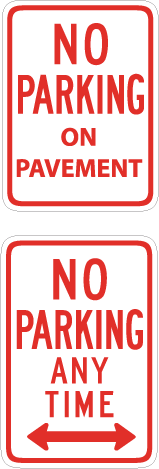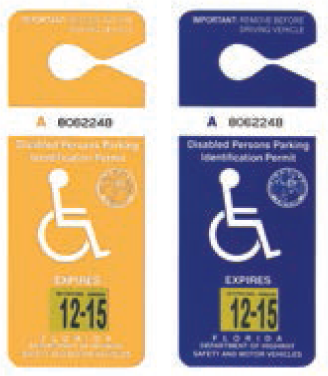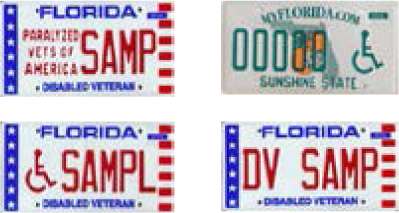Florida Driver Handbook: Parking
Order now5. Driving Safety
- 5.1. Distracted Drivers
- 5.2. Getting Ready to Drive
- 5.3. Defensive Driving
- 5.4. Driving Safety for Mature Drivers - Tips to Help You Drive Safer .... Longer
- 5.5. When You Back Up
- 5.6. Avoiding Rear-end Collisions
- 5.7. Emotions
- 5.8. Basic Driver Improvement
- 5.9. Safety Belts
- 5.10. Protecting Children
- 5.11. Speed Limits
- 5.12. Following Officer's and Fireman's Instructions
- 5.13. Crossing Intersections
- 5.14. Right-of-Way
- 5.15. Stop Signs
- 5.16. Open Intersections
- 5.17. Roundabouts
- 5.18. Driveways
- 5.19. Emergency Vehicles
- 5.20. Making Turns
- 5.21. Turnabout (Three-Point Turn)
- 5.22. Turn Signals and Emergency Signals
- 5.23. Traffic Lanes
- 5.24. Blind Spots
- 5.25. Passing
- 5.26. Minimum Safe Following Distances
- 5.27. Parking
- 5.28. Expressway Driving
- 5.29. Night Driving
- 5.30. Animals
- 5.31. Reduced Visibility
- 5.32. Handling Emergencies
- 5.33. First Aid
When parking on a public road, move as far away from traffic as possible. If there is a roadside shoulder, pull as far onto it as you can. If there is a curb, pull close to it - you must not park more than one foot away.
Always park on the right side of the roadway, unless it is a one-way street. Make sure your vehicle cannot move. Set the parking brake and shift to park with an automatic transmission or reverse with a manual transmission. Turn off the engine and lock the vehicle. Florida law requires that you take the keys out of your vehicle before leaving it. Always check traffic behind you before getting out on the street side or get out on the curb side. Bicyclists may be endangered by opening a door.
Before you leave any parked position, look over your shoulder to the rear to make sure the way is clear. Give the proper turn signal if driving from a curb and yield to other traffic.
5.27.1 - Parking on Hills
When parking on hills:
- Turn your wheels so that if your car starts to move, it will roll away from traffic or into the curb. Study the diagram provided.
- Set the parking brake.
- Place automatic gear shift in park. Shift manual gears to reverse (downhill) or first (uphill).
- Turn vehicle off.

5.27.2 - Straight-in Parking
The rear markers represent the REAR corners of the parking space. The forward markers represent the approximate CENTER of the parking space. When properly parked, the vehicle should be centered inside the space with no part of the vehicle extending out into the traffic lane.
5.27.3 - Where Parking is not Allowed

- On the roadway side of another parked vehicle (double parking).
- On crosswalks.
- On sidewalks.
- In bicycle lanes.
- In front of driveways.
- By curbs painted yellow or where "No Parking" signs are posted.
- Within intersections.
- Within 15 feet of a fire hydrant.
- Within 20 feet of an intersection.
- Within 20 feet of the entrance to a fire, ambulance or rescue squad station. Within 50 feet of a railroad crossing.
- On the hard surface of a highway where parking spaces are not marked.
- On any bridge or overpass or in any tunnel.
- Within 30 feet of a rural mail box on a state highway between 8 a.m. and 6 p.m.
- Within 30 feet of any flashing signal, stop sign or traffic signal.
- In such a way that you block or create a hazard for other vehicles.
5.27.4 - Parking Lights
Parking lights must be used at night on any vehicle parked on a roadway or shoulder outside of cities and towns. Driving with parking lights only (in place of headlights) is against the law.
5.27.5 - Parking Privileges for Persons with Mobility Impairments
 Persons with mobility impairments do not have to pay parking fees on any public street, highway, or metered space and may park in spaces reserved for person with disabilities. To park in these designated spaces, a person needs to obtain a parking placard or obtain a specialty license plate authorized to park in the reserved spaces.
Persons with mobility impairments do not have to pay parking fees on any public street, highway, or metered space and may park in spaces reserved for person with disabilities. To park in these designated spaces, a person needs to obtain a parking placard or obtain a specialty license plate authorized to park in the reserved spaces.
Parking Placards
Vehicles must display a valid parking placard which is visible from the front and rear of the vehicle. Each side of the placard must have the international symbol of accessibility in a contrasting color in the center. The placards may be obtained from a tag agent or Tax Collector's office and must be renewed every four years.
- Proof of Eligibility: Statement from a physician licensed in the United States, the Division of Blind Services of the Department of Education, or the Veterans Administration, that the applicant is a severely physically disabled individual with permanent mobility problems which substantially impair his or her ability to move around or is certified as legally blind.
- Display: Visible from the front and rear of the vehicle.
- Procedure: Contact your local county tax collector or tag agent. a. Complete HSMV 83039 - Application for a disabled person's parking permit. b. Provide proof of eligibility - Doctor's Statement issued within the last 12 months. c. Application for permanent disabled parking permit is no fee - blue. d. Pay $15 for temporary disabled person parking permit red. e. Present valid Florida driver license or identification card if one was issued and available.
Vehicles with Specialty License Plates that display the International Symbol of Access (otherwise known as the international wheelchair symbol) may legally park in spaces reserved for people with Disabilities.

Disabled American Veterans (DAV) and Paralyzed Veterans of America (PVA) plates are not required to have the ISA Symbol. The ISA Symbol is optional:
Parking reserved for people with disabilities is a Federal and State legal requirement. Accessible parking spaces allow motorists with disabilities safe and equal access to goods and services. It is illegal for any vehicle to park, stop, or stand in these spaces unless it displays a Parking Permit, a Specialty License Plate with the ISA symbol issued by the Florida DMV, or a similar permit or plate issued by another state. In addition, the vehicle must actually be transporting the person with the disability who owns the permit or registration. Law enforcement officers are authorized to request proof of ownership of the Parking Permit identification card or a vehicle with a Specialty ISA License Plate. Do not loan your Parking Permit. Anyone who obtains or uses a permit that does not belong to them can be charged with a second degree misdemeanor, punishable by a $500 fine or up to 6 months in jail, and the illegally parked vehicle can be towed and the permit confiscated.
See DHSMV web site for additional information on disabled parking permits. www.flhsmv.gov/dmv/disabled_pkg.html#3
Check out our Customer Reviews!


